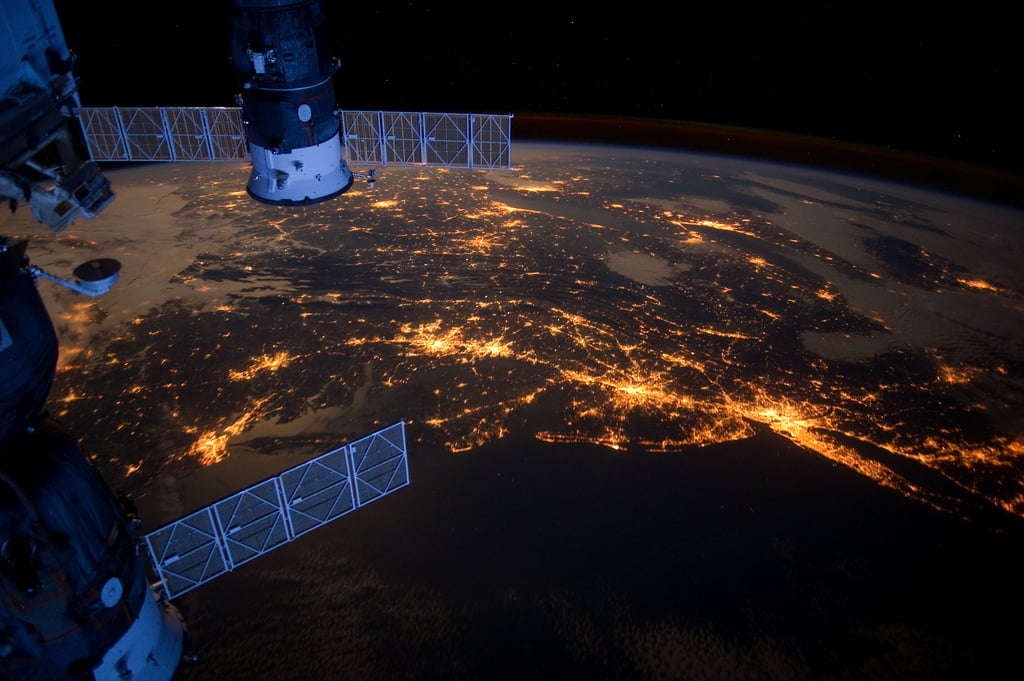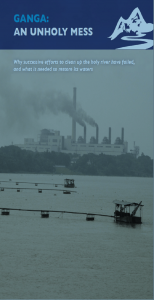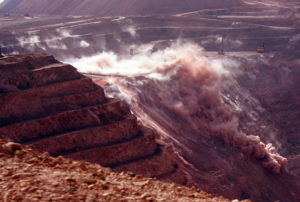Geoengineering may have to move from the fringes of the climate debate towards the mainstream if the world is to meet the climate targets included in the Paris Climate Agreement, say some policy analysts and scientists.
At the rate that the world is burning coal, gas and oil, even rapid adoption of low carbon technologies might not keep warming within 2C, while the 1.5C target, which is also included in the agreement, looks even further out of reach.
But geoengineering is dangerous stuff – it involves countering climate change by manipulating the planet’s weather without being able to guarantee or calibrate the outcomes. Even leading researchers who spend their lives working on the concept acknowledge that these technologies could have huge unintended, and harmful, consequences.
The idea is simple: humans can directly and dramatically intervene in the earth’s climate system, by reflecting the sun’s rays back into space or sucking carbon dioxide from the atmosphere. Proposed techniques include spraying sun-reflecting aerosols into the stratosphere, or brightening clouds to increase their ability to cool the Earth’s climate. Another idea is to drop iron filings into the oceans, which would alter ecosystems and sponge up carbon dioxide, storing it in the depth of the ocean.
For geoengineering to work effectively – assuming that the science actually works – it would require strong and highly adaptive international institutions to manage these solutions.
In addition, critics warn that geoengineering will create a moral hazard, the danger that small fixes might dissuade us from pursuing larger solutions such as revolutionising how the world produces and consumers energy.
Some commentators even worry that sweeping powers to alter the weather could accidentally cause wars, or that states may consider deliberately using them against each other.
Jamais Cascio, distinguished fellow at California’s Institute for the Future, recalls a US-government sponsored climate change simulation in 2011. As "Chinese" and "American" teams battled with storms and droughts, geoengineering solutions were considered. By the end, says Cascio, the use of sun-reflecting technologies on one side was considered a threat to agriculture on the other, and “missiles were being put on alert”.
When it comes to preventing conflict, said David Keith, a Harvard scientist and public policy professor, the challenge can be overstated. “Current evidence is that geoengineering is pretty even – that most regions benefit, the differences between winners and losers are actually quite small and it’s not really effective as a weapon. So compared to nuclear weapons or even central banking it looks like a relatively easy regulatory problem.”
But how real are the various risks posed by geoengineering? Piers Forster, climate change professor at the UK’s University of Leeds, points to the immaturity of geoengineering technology as one reason to downplay concerns of huge unintended consequences. When his researchers ran a simulation to brighten clouds with sea salt particles, for example, only a few clouds responded.
“Quite a lot of these technologies are still pretty hypothetical – it takes time to deploy them at a scale that makes any difference at all,” says Forster. “So I would think even if a particular country or state did want to go ahead and do this, it would still be 15 or 20 years before it occurred.”
Large-scale climate manipulation would also be hugely expensive, while funding for even relatively cheap research projects has been hard to come by. The UK’s three major, publicly funded programmes completed their work in 2014, concluding that geoengineering would be “more expensive and challenging” than previously thought and have limited benefits.
Unsurprisingly, there is no sign of further public money for geoengineering projects. “I think they just think it’s too far off and hypothetical,” says Forster.
China looks at geoengineering
A high degree of international scientific cooperation may also offer cause for hope. China provides an example. A government-funded geoengineering research project that secured a 17-million-yuan grant has completed its first year. The project, which is led by a British researcher, will feed its results into a US-run international research programme.
As well as the potential impacts of geoengineering, the team has studied China’s experience running cloud-seeding programmes in 50,000 communes, as well as mega-engineering schemes like the Three Gorges Dam, says John Moore, who is leading the project from Beijing Normal University. “What we think China can provide internationally is experience of governance and management techniques for dealing with these large-scale environmental modifications – both positive and negative,” he said.
This collaborative approach is a far cry from the warnings of Australian ethicist and geoengineering critic Clive Hamilton, who has argued China’s history of weather manipulation, top-down political system and urgent environmental challenges make it a likely contender to use geoengineering technology on its own without sharing its know-how with other countries.
But in fact, there is little sign of anything beyond localised Chinese cloud-seeding projects, or of much interest on the ground. “Over my five-year career, I have never been informed about one geoengineering-themed meeting or met someone who actively works on it,” says Chinese Greenpeace campaigner Li Shuo.
The scale of China’s geoengineering research is also tiny compared with investment in renewable energy, for example. “Policymakers in China think green transition and low-carbon energy are more urgent and reliable approaches to combating climate change,” says Weng Weili, a researcher at CASS’s Institute for Urban and Environmental Studies.
Fear the entrepreneurs
If China isn’t to be feared, should the world be increasingly wary of the private sector’s involvement in geoengineering? Many scientists have expressed concern about corporations having a hand regulating the atmosphere: “Would you want the BP Geoengineering Corporation running the world’s climate?” asks Alan Robock of Rutgers. “Whose interests would they really have at heart?”
One worry is transparency. Piers Forster’s team, for example, had problems getting “vital information” about certain technologies owned by private companies, which were only prepared to share them on the condition of confidentiality.








